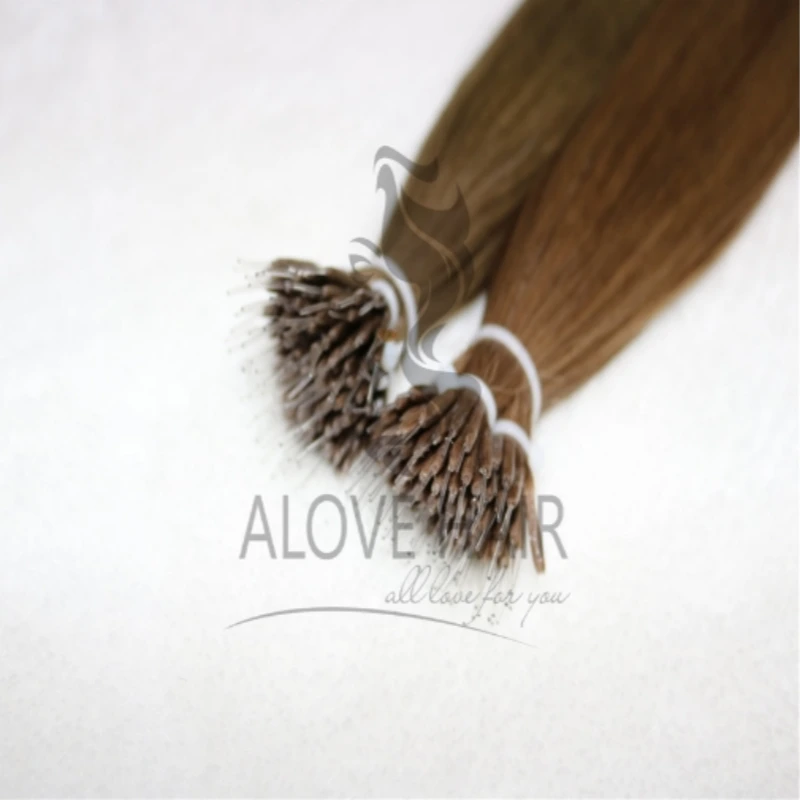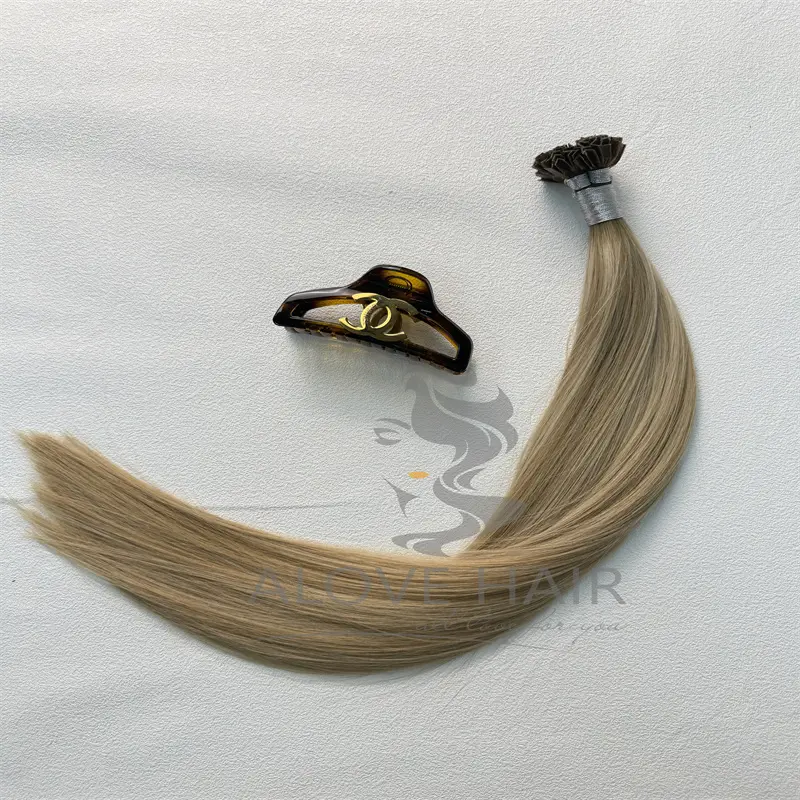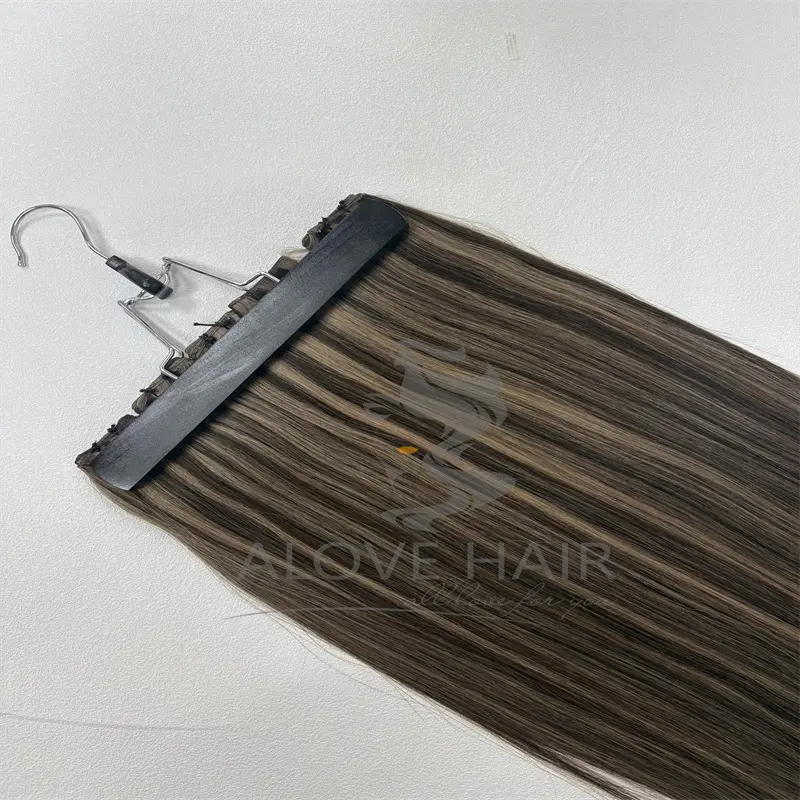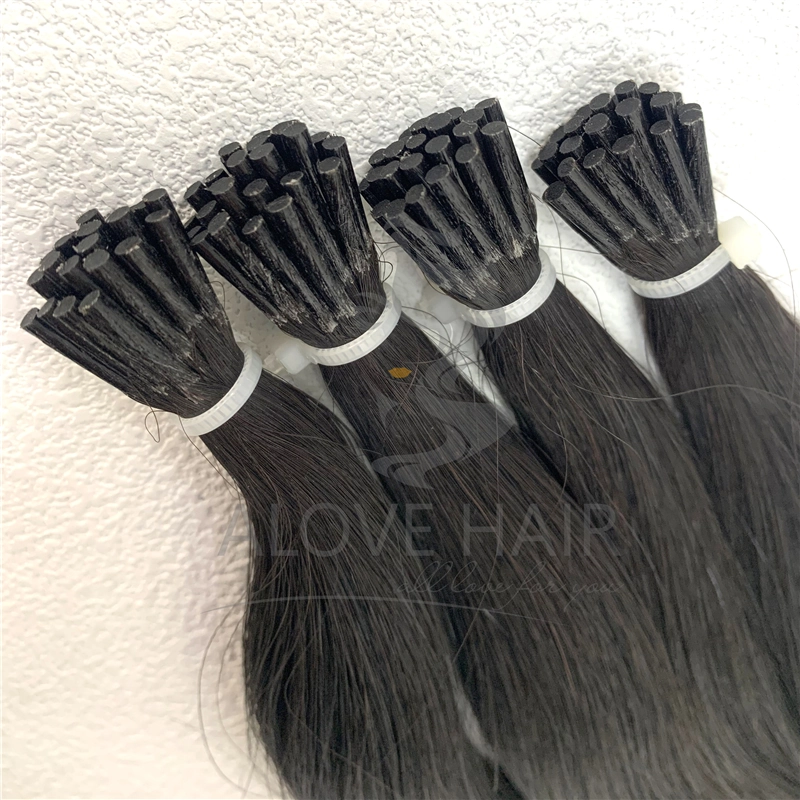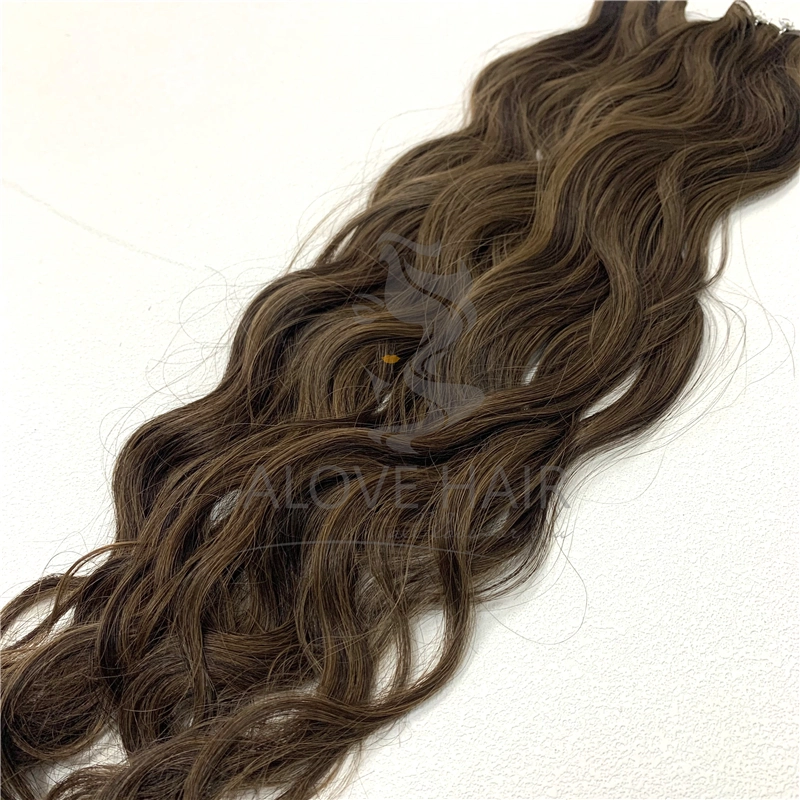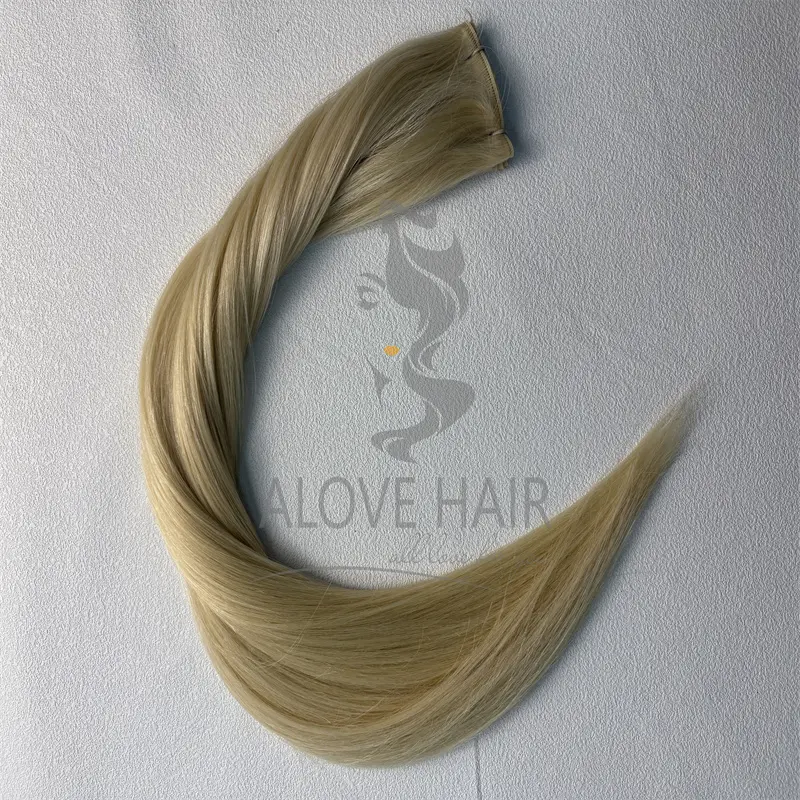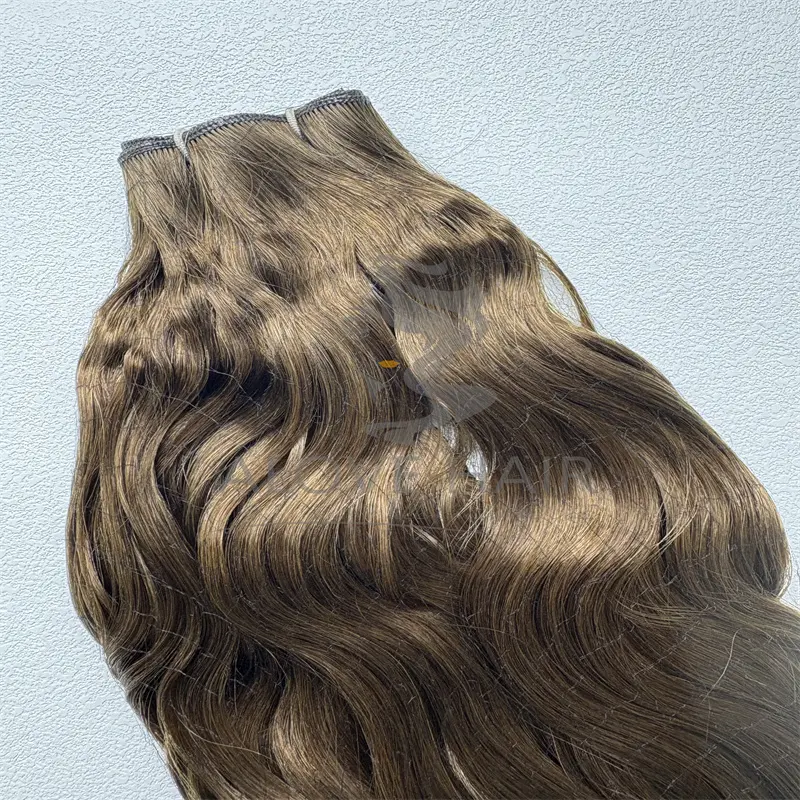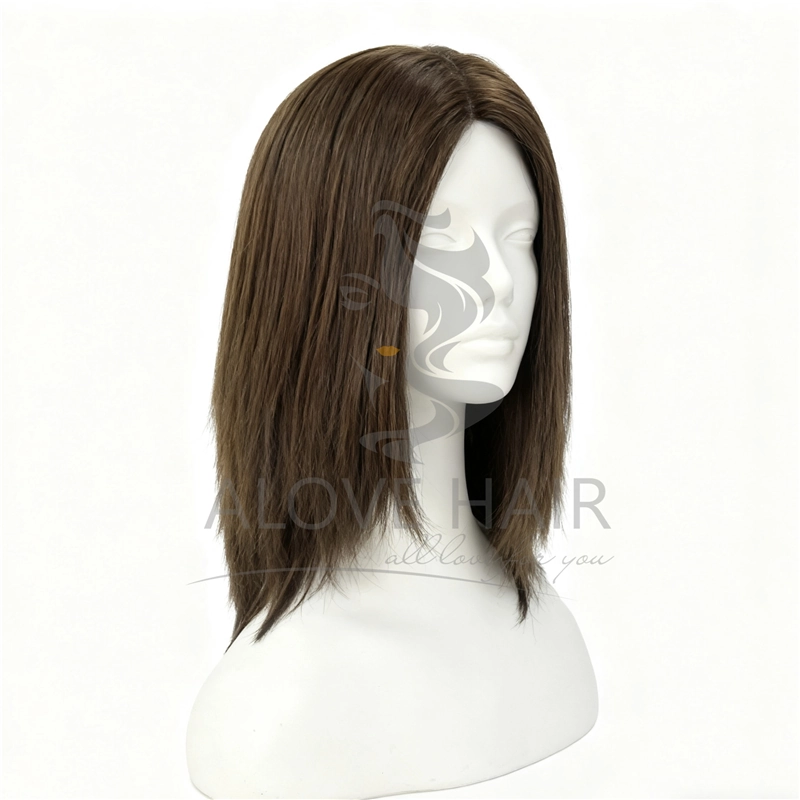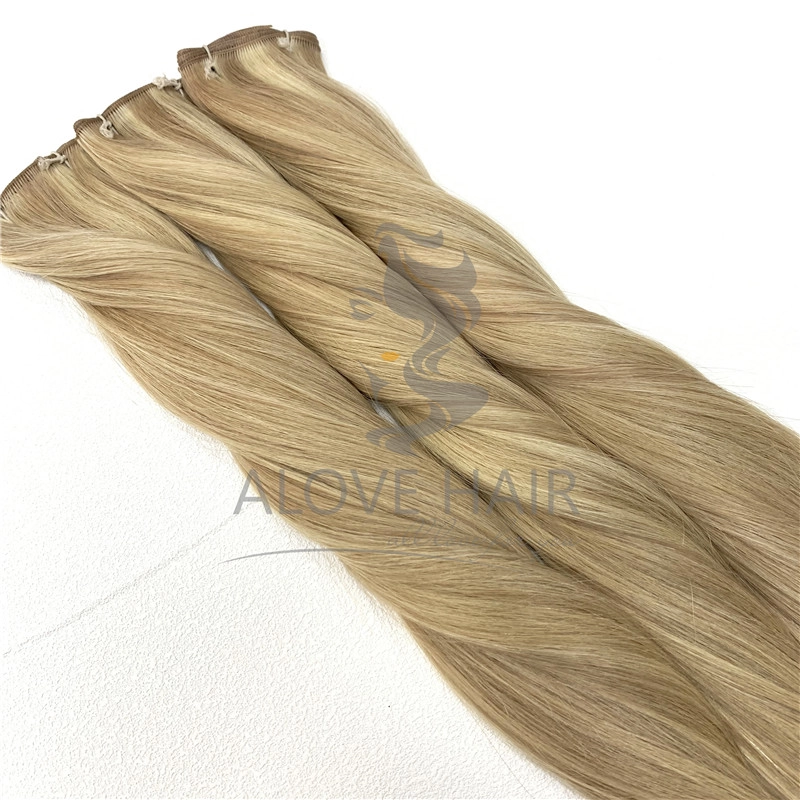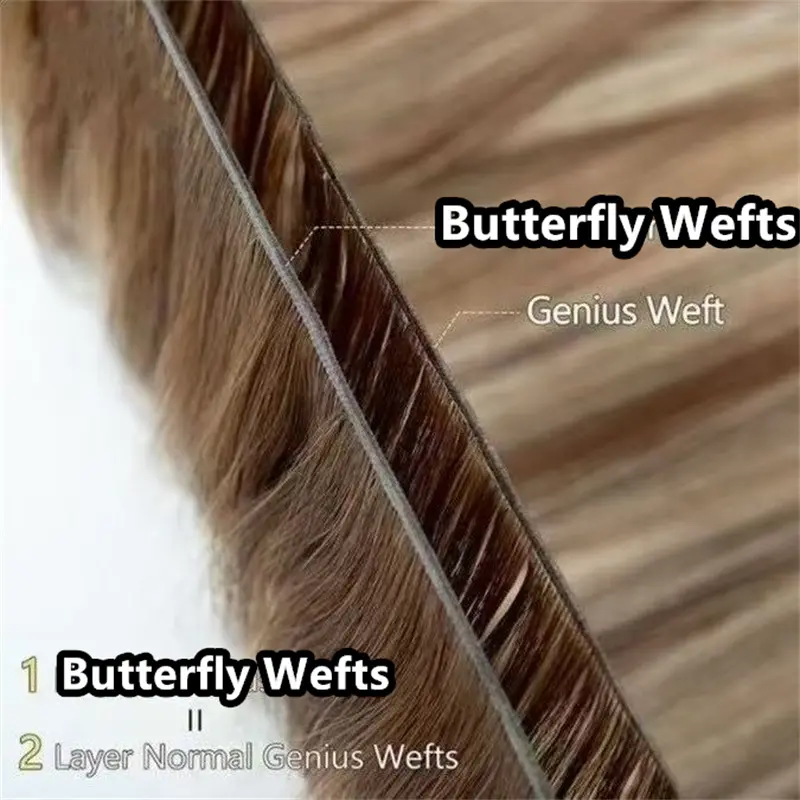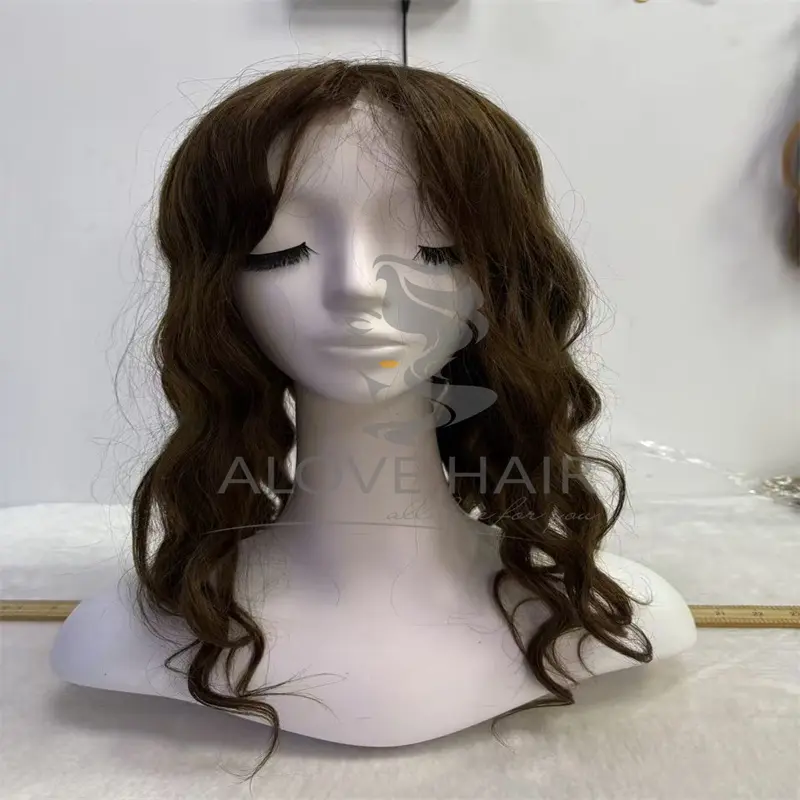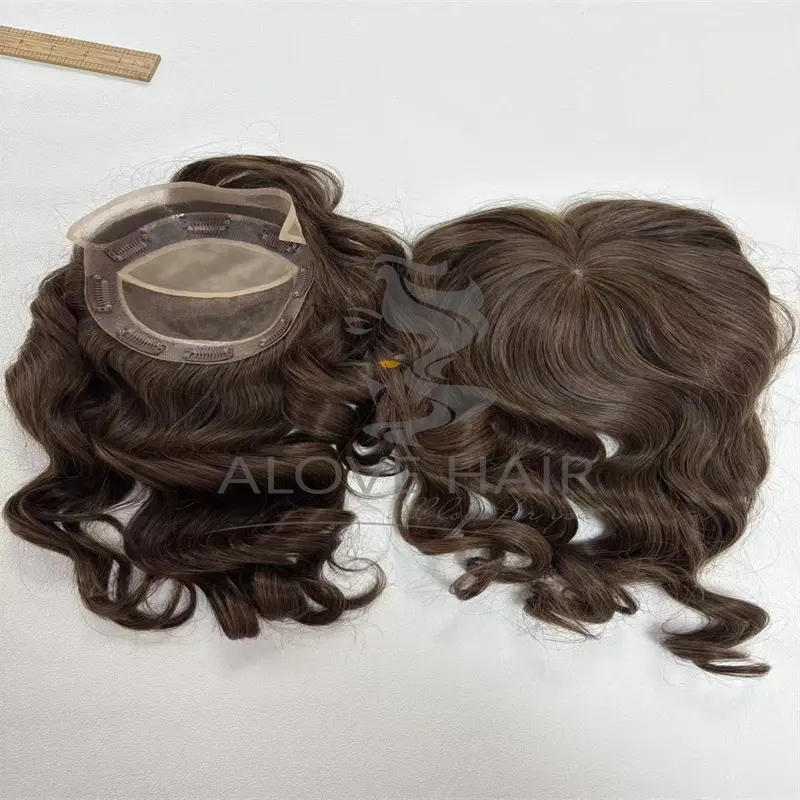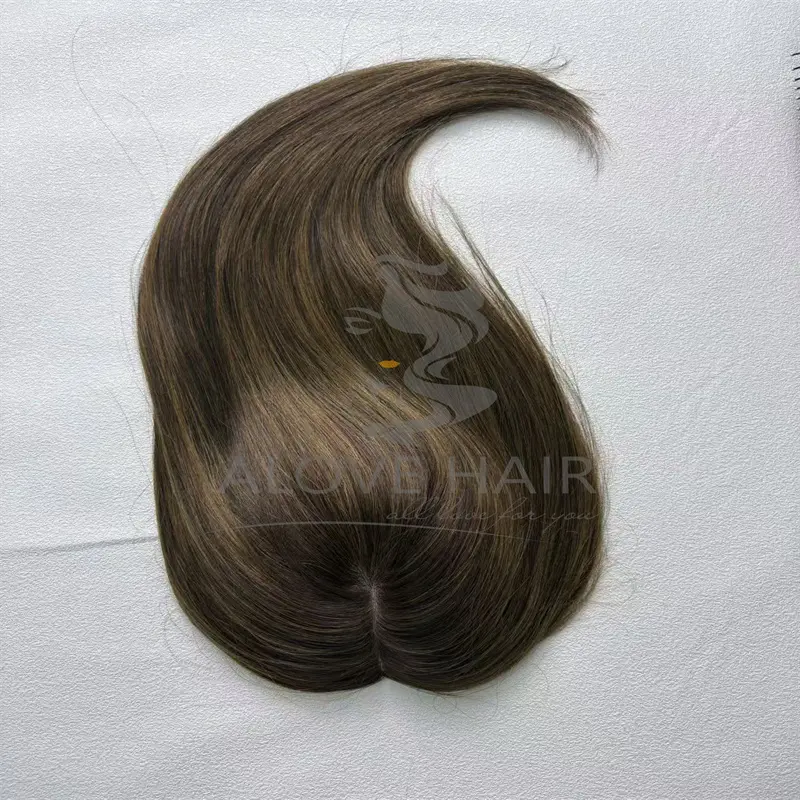Mastering Nano Ring Hair Extensions is essential for every professional stylist looking to provide seamless, natural-looking results. This guide covers everything from application techniques to maintenance tips, helping stylists confidently offer high-quality nano ring hair extensions to their clients.
Nano ring hair extensions have quickly become one of the most popular and sought-after methods for adding length and volume to natural hair. Unlike traditional extension techniques that rely on heat, glue, or harsh chemicals, nano ring hair extensions use tiny, lightweight rings to attach small strands of hair securely without causing damage. These rings are nearly invisible once applied, making them an excellent choice for clients who want a seamless, natural look.
Both clients and professional stylists appreciate nano ring hair extensions for their versatility and gentle application. Clients enjoy the freedom to style their hair naturally without worrying about visible tracks or discomfort. Stylists benefit from a method that is relatively quick to apply, adjustable, and safe for repeated use. Additionally, nano rings allow for easy removal and repositioning, which makes them ideal for clients who prefer to switch up their hairstyles frequently.
The purpose of this guide is to help professional stylists master the essential techniques of nano ring hair extensions—from proper application to maintenance and safe removal. Whether you are new to this method or looking to refine your skills, this comprehensive guide will provide step-by-step instructions and expert tips to ensure you deliver flawless results. By mastering nano ring hair extensions, stylists can expand their service offerings and provide clients with a high-quality, long-lasting hair transformation.
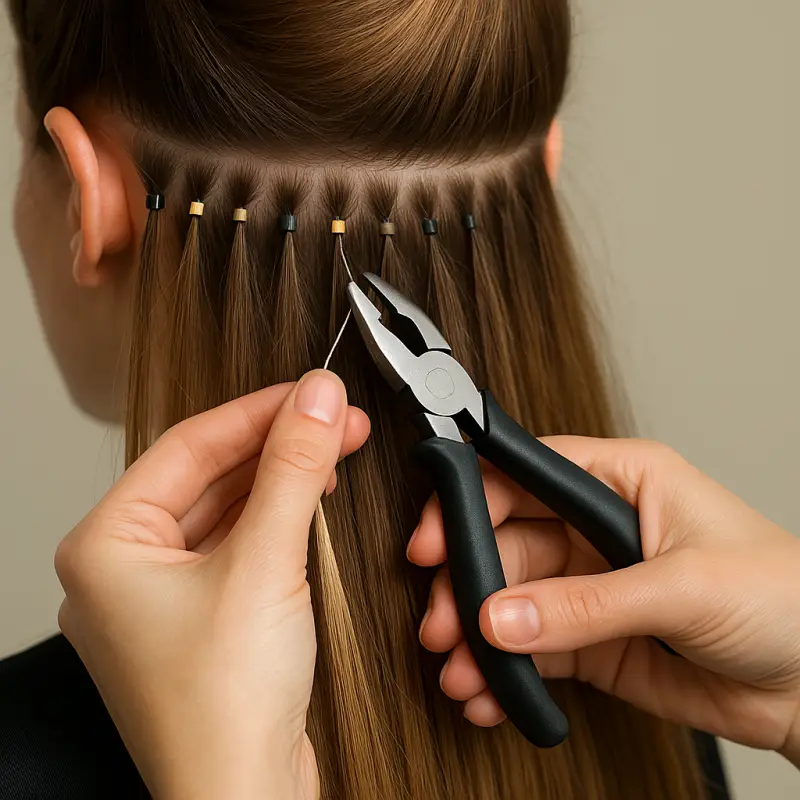
Understanding Nano Ring Hair Extensions
Nano ring hair extensions are a modern and innovative method of hair extension application that offers a gentle, natural-looking way to add length and volume to hair. Unlike other extension techniques that may rely on adhesives, heat, or chemical bonding, nano ring extensions use tiny rings—often called “nano rings” or “nano beads”—to securely attach individual strands of extension hair to the natural hair. These rings are exceptionally small, usually made of lightweight metal coated with silicone to prevent damage or slipping, and are virtually invisible once applied. The result is a seamless blend that allows for natural movement and styling without the worry of harsh chemicals or heat damage.
What Are Nano Ring Extensions?
Nano ring extensions involve threading a small section of the client’s natural hair through the nano ring using a specialized loop tool. Then, the extension strand, pre-tipped with a small keratin or bonded tip, is inserted into the ring alongside the natural hair. The stylist uses pliers to gently clamp the ring, securing the extension firmly without the need for glue or heat. Because the rings are so tiny, they provide a very discreet attachment point that is comfortable for the wearer and virtually undetectable to the eye.
How Do They Differ from Other Types?
Nano ring extensions are often compared to micro rings, tape-ins, and glue-in extensions, each with distinct application methods and characteristics:
Micro Rings: These are similar to nano rings but slightly larger. While micro rings also clamp strands of extension hair to natural hair, they are more noticeable due to their size. Nano rings are smaller and provide a more seamless and lightweight option.
Tape-In Extensions: Tape-ins use double-sided adhesive tape to attach wefts of extension hair to the roots. While quick to apply and remove, tape-ins can sometimes cause damage if not maintained properly and may be visible if not placed correctly.
Glue-In Extensions: These use keratin or other adhesives to bond extension strands directly to natural hair. Although glue-ins provide strong hold and immediate volume, the application and removal process involve heat and chemicals that can weaken natural hair and cause damage.
Nano ring extensions stand out because they avoid the use of adhesives and heat, making them a safer and less damaging alternative. Their discreet size and secure hold also make them popular among both clients and stylists who prioritize hair health and natural aesthetics.
Benefits of Using Nano Rings for Clients and Stylists
For clients, nano ring hair extensions offer numerous advantages. The lightweight and small size of the rings mean less tension on the scalp and hair follicles, reducing the risk of discomfort or hair breakage. Nano rings allow for more natural hair movement, making the extensions blend effortlessly with natural hair. The method is also reversible and non-permanent; clients can easily remove or reposition the extensions without damage. Additionally, nano ring extensions are reusable, making them cost-effective in the long run.
For professional stylists, nano ring extensions provide versatility and control. The application is customizable, allowing stylists to place extensions strategically for maximum volume and length without sacrificing natural hair health. Because the method doesn’t involve heat or glue, it minimizes the risk of hair damage, which enhances client satisfaction and salon reputation. The removal process is straightforward, reducing time spent on upkeep and minimizing client concerns. Nano ring extensions also open opportunities for stylists to expand their services with a premium, high-quality product that appeals to a wide range of clients.
Hair Types and Client Suitability
Nano ring hair extensions are suitable for a variety of hair types, but they work especially well for clients with fine to medium hair. The tiny rings provide a gentle attachment that is less likely to weigh down or damage delicate strands. For clients with thick or coarse hair, nano rings can still be effective, but stylists may need to adjust the number and placement of extensions to achieve the desired look without excessive bulk.
Clients with sensitive scalps or those who have experienced damage from other extension methods often find nano rings to be a safer alternative. However, because the method involves clamping small rings around the hair, it is important to avoid applying too much tension to prevent hair stress.
It’s also important to consider lifestyle and hair care habits. Nano ring extensions require regular maintenance and proper care to prevent tangling and slipping. Clients who are active or frequently swim may need special advice on protecting their extensions.
Nano ring hair extensions represent a versatile, safe, and natural-looking option for both clients and stylists. Understanding their unique features, benefits, and suitability helps professionals provide tailored solutions that enhance hair beauty while preserving hair health.
Tools and Materials Needed
Successful application of nano ring hair extensions requires the right tools and high-quality materials to ensure a smooth process and beautiful, lasting results.
Essential Tools for Nano Ring Application
Nano Ring Pliers: These specially designed pliers are used to clamp the tiny nano rings securely around the natural hair and extension strands without causing damage. They provide the right amount of pressure to hold the ring firmly in place.
Loop or Pulling Tool: This small tool helps thread the natural hair through the nano ring before attaching the extension. It makes the application process efficient and minimizes discomfort for the client.
Nano Rings (Beads): These are tiny metal rings, often lined with silicone to grip hair gently without slipping or causing breakage. Nano rings come in various colors to match different hair shades, helping keep the extensions discreet.
Hair Extensions: Pre-tipped strands compatible with nano ring application, often keratin-tipped, are essential for a secure hold. Extensions come in various lengths, textures, and colors to match client needs.
Choosing the Right Quality of Hair Extensions
For the best results, always choose high-quality Remy human hair extensions. Remy hair is collected with the cuticle intact and aligned in the same direction, reducing tangling and ensuring a natural shine. This type of hair also lasts longer and can be styled with heat tools safely, providing a premium experience for clients.
Color Matching and Strand Selection Tips
Accurate color matching is crucial for natural-looking extensions. Use a wide range of nano ring colors and hair shades to blend seamlessly with the client’s natural hair. Take samples of the client’s hair and compare them directly with extension strands under natural light to ensure the best match.
Selecting the right strand thickness and length is also important. Fine strands work best for clients with thin or fragile hair, while thicker strands suit denser hair types. Tailoring these choices enhances comfort, durability, and appearance.
Preparing the Client’s Hair for Nano Ring Hair Extensions
Proper preparation of the client’s hair is a crucial step to ensure a smooth, long-lasting, and professional nano ring hair extension application. This phase not only sets the foundation for flawless attachment but also helps maintain the health of the natural hair, which is essential for client satisfaction and repeat business.
Hair Consultation and Health Assessment
Before any extension work begins, conduct a thorough hair consultation and health assessment. Discuss the client’s hair history, including any previous chemical treatments, damage, or scalp conditions. Assess the hair’s strength, elasticity, and overall health to determine if nano ring extensions are suitable. Clients with severely damaged or brittle hair may require treatment before application or alternative extension methods. This step also helps manage client expectations regarding results and maintenance.
Washing and Drying the Hair Before Application
Clean hair is essential for the nano rings to grip securely and to avoid scalp irritation. Wash the client’s hair with a gentle, residue-free shampoo to remove oils, dirt, and product buildup. Avoid using conditioners or heavy treatments immediately before application, as these can cause the rings to slip. After washing, thoroughly dry the hair using a blow dryer or allow it to air dry completely. Damp hair can lead to improper ring closure and premature slipping of extensions.
Sectioning Techniques for Efficient and Neat Application
Effective sectioning ensures that extensions are applied evenly and discreetly, providing a natural look and optimal comfort for the client. Use fine-tooth combs and clips to divide the hair into manageable, horizontal sections starting from the nape upward. Create clean, straight parts to make it easier to isolate strands for the nano ring attachments. Proper sectioning not only speeds up the application process but also helps avoid tangling and overlapping of extensions, which can compromise the final result.
Mastering these preparation steps will lay the groundwork for a seamless nano ring hair extension application, maximizing both the stylist’s efficiency and the client’s satisfaction.
Step-by-Step Nano Ring Application Process
Mastering the nano ring hair extensions application process is essential for delivering a seamless, natural look while ensuring client comfort and long-lasting results. Below is a detailed guide on how to attach nano rings securely and invisibly, distribute extensions evenly, avoid common mistakes, and manage your time efficiently.
How to Attach Nano Rings Securely and Invisibly
Select a Small Section of Natural Hair: Using a loop tool or a hook, take a small, thin strand of the client’s hair, no thicker than the nano ring.
Insert the Nano Ring: Slide an open nano ring onto the loop tool, then pull the natural hair strand through the ring carefully.
Add the Extension Strand: Thread the extension strand inside the nano ring alongside the natural hair.
Clamp the Nano Ring: Using specialized pliers, gently but firmly squeeze the nano ring shut, securing both the natural and extension hair strands together. The ring should be closed flat and tight to prevent slipping but not so tight as to cause discomfort or damage.
Position the Ring Properly: Ensure the nano ring lies flat against the scalp and is hidden beneath the natural hair for an invisible finish.
Tips for Distributing Extensions Evenly
Start from the Bottom: Begin applying extensions at the nape of the neck and work upwards in horizontal layers.
Maintain Consistent Spacing: Leave small gaps between each nano ring to avoid overcrowding, which can cause tangling and discomfort.
Follow the Hair’s Natural Fall: Attach extensions in alignment with the client’s natural hair direction to blend seamlessly.
Use Sectioning Clips: Keep upper sections clipped away to avoid interference and ensure precision during application.
Avoiding Common Mistakes During Application
Don’t Use Too Much Hair in One Ring: Overloading rings can cause them to slip or create tension, leading to breakage.
Avoid Applying Too Close to the Scalp: Position rings about 1cm from the scalp to prevent discomfort and allow for natural movement.
Don’t Overuse Heat or Products Before Application: Residue from styling products or heat damage can weaken grip and shorten extension lifespan.
Ensure Rings Are Properly Closed: Incomplete closure leads to slipping and uneven weight distribution.
Time Management and Client Comfort
Communicate Throughout the Process: Keep the client informed and comfortable, offering breaks if necessary.
Work Methodically: Efficient sectioning and a consistent application rhythm reduce time without compromising quality.
Check for Discomfort: Regularly ask the client if the nano rings feel tight or uncomfortable and adjust accordingly.
Use Comfortable Tools: Ensure pliers and other tools are ergonomic to avoid fatigue during longer sessions.
By following these detailed steps and tips, stylists can achieve a professional nano ring application that looks natural, feels comfortable, and lasts longer, ultimately increasing client satisfaction and loyalty.
Styling and Blending Nano Ring Hair Extensions
Achieving a natural and flawless finish with nano ring hair extensions depends heavily on expert cutting, blending, and styling techniques. Proper product use also plays a critical role in maintaining the health and appearance of both the extensions and natural hair.
Cutting and Blending the Extensions for a Natural Look
Once the nano rings are applied, the extensions need to be carefully cut and blended to match the client’s natural hair texture and length. Use sharp, professional scissors to trim the extensions, layering them softly to avoid harsh lines that can reveal the extensions. Point-cutting techniques work well to create texture and movement, allowing the extensions to blend seamlessly with the client’s own hair. Always consult the client’s desired look, whether it’s a blunt cut, layered style, or soft waves, to ensure the extensions complement their overall hairstyle.
Styling Techniques Suitable for Nano Ring Extensions
Nano ring extensions allow for versatile styling but require gentle handling. Use low to medium heat settings when blow-drying, curling, or straightening to protect both the extensions and natural hair. Avoid excessive tension when styling to prevent loosening the rings. Updos, braids, and ponytails can look fantastic with nano rings, provided the extensions are evenly distributed and well blended. When curling or straightening, always apply a heat protectant beforehand.
Products to Use and Avoid for Maintenance
For maintaining nano ring extensions, recommend sulfate-free, gentle shampoos and hydrating conditioners to keep hair soft without loosening the rings. Leave-in conditioners and detangling sprays are beneficial but should be applied mainly to the ends to avoid buildup near the rings. Avoid heavy oils, waxes, and silicone-based products as they can cause residue buildup and make the nano rings slip or become visible. Also, steer clear of alcohol-based styling products, which dry out hair and weaken the bonds.
With the right cutting, styling techniques, and product choices, stylists can ensure that nano ring hair extensions remain beautiful, natural-looking, and healthy for their clients.
Maintenance and Client Aftercare for Nano Ring Hair Extensions
Proper maintenance and aftercare are essential for prolonging the life of nano ring hair extensions and keeping both the extensions and natural hair healthy. As a professional stylist, educating your clients on effective care routines will ensure they enjoy beautiful results and minimize potential issues.
Educating Clients on Care Routines to Prolong Extension Life
Inform clients that nano ring extensions require gentle handling to avoid premature slipping or damage. Encourage them to avoid pulling or tugging on the hair, and to be mindful when brushing or styling. It’s best to use a soft-bristle brush or a loop brush designed specifically for extensions, starting from the tips and working upward to prevent breakage and tangling. Advise clients to sleep with their hair tied loosely in a braid or ponytail to avoid friction that can cause matting around the rings.
Recommended Products for Washing and Conditioning
Recommend sulfate-free shampoos and lightweight, moisturizing conditioners that won’t weigh down the hair or cause buildup around the nano rings. Products formulated for color-treated or chemically processed hair often work well, as they provide gentle cleansing and hydration. Suggest applying conditioner primarily from mid-length to ends, avoiding the roots where the nano rings sit. Leave-in conditioners and detangling sprays are helpful for keeping hair smooth, but should be applied sparingly near the roots to maintain ring integrity.
Handling Tangling and Shedding Issues
Some tangling or minimal shedding is normal with any extension type, but proper care reduces these problems. Advise clients to detangle hair daily, especially before washing, and to avoid using heavy styling products that cause buildup. If tangling occurs near the nano rings, recommend gently finger-detangling first before brushing. Instruct clients to avoid excessive heat styling and to always use heat protectants to maintain hair strength and elasticity.
Scheduling Follow-Up Appointments for Adjustments
Encourage clients to schedule regular follow-up visits every 6 to 8 weeks for tightening and adjustment of the nano rings. This prevents slipping as natural hair grows and helps maintain a neat, comfortable look. During these appointments, you can also check the health of the natural hair and extensions, addressing any concerns such as ring slippage, tangling, or breakage. Regular professional maintenance extends the lifespan of the extensions and ensures client satisfaction.
By providing thorough aftercare education and recommending appropriate products and maintenance schedules, stylists empower clients to keep their nano ring hair extensions looking flawless and healthy for longer.
Removing Nano Ring Hair Extensions Safely
Proper removal of nano ring hair extensions is just as important as their application. Careful removal protects the natural hair from damage and allows for possible reuse of the extensions.
Step-by-Step Removal Guide
Prepare the Tools: Use a pair of nano ring removal pliers, which are designed to gently open the rings without causing hair breakage.
Locate Each Nano Ring: Starting from the nape, find each nano ring attachment.
Gently Open the Rings: Place the removal pliers around the ring and gently squeeze to open it. Avoid pulling or yanking the extensions.
Slide Off the Extensions: Once the ring is open, carefully slide the extension strand and the natural hair out of the ring.
Repeat Methodically: Work section by section to ensure all extensions are removed safely and evenly.
Comb Through Natural Hair: After removal, gently comb through the natural hair to detangle and check for any damage.
How to Prevent Hair Damage During Removal
Always use the correct removal tools to avoid pulling or snapping the hair.
Open rings fully before sliding the extensions out to minimize stress on the natural hair.
Take your time—rushing can lead to breakage or scalp irritation.
Avoid forcefully detangling hair during removal; use gentle finger combing or a soft brush.
If the client’s hair feels fragile, apply a conditioning treatment post-removal to restore moisture and strength.
Reusing Extensions – What to Keep in Mind
Nano ring extensions can often be reused if removed carefully. After removal, clean the rings thoroughly to remove any residue or buildup. Inspect the hair strands for damage such as tangling or breakage; damaged extensions should be discarded. Store extensions flat in a cool, dry place to maintain their quality. Keep in mind that repeated use may reduce the lifespan of extensions, so inform clients about the importance of proper care both during wear and storage.
Safe and professional removal maintains the integrity of both the client’s natural hair and the extensions, ensuring the best experience and results.
Troubleshooting Common Issues with Nano Ring Hair Extensions
Even with careful application and maintenance, clients may occasionally experience issues with their nano ring hair extensions. Understanding how to troubleshoot common problems helps stylists provide quick solutions and maintain client satisfaction.
Dealing with Slipping or Loosening Rings
Slipping or loosening nano rings often occur due to improper closure during application, excessive hair product buildup, or natural hair growth. To fix slipping rings, gently open the ring with removal pliers, reposition it closer to the scalp (about 1cm away to avoid discomfort), then clamp it tightly again with the application pliers. Educate clients on avoiding heavy oils or conditioners near the rings, as these can reduce grip and cause sliding.
Managing Allergic Reactions or Scalp Sensitivity
Some clients may develop scalp sensitivity or mild allergic reactions to the metal in nano rings or the extension hair. If redness, itching, or irritation occurs, recommend a patch test before future applications. Using hypoallergenic, nickel-free nano rings can prevent metal allergies. Additionally, advise clients to avoid applying heavy styling products or harsh chemicals near the scalp. In case of persistent irritation, suggest consulting a dermatologist and temporarily removing the extensions.
Solutions for Matting or Tangling
Matting and tangling typically happen when extensions are not properly cared for or when hair is not detangled regularly. To prevent matting, instruct clients to brush their hair daily with a soft-bristle or loop brush, starting from the ends and working upward gently. Recommend sleeping with hair loosely tied and avoiding heavy product buildup. For existing mats, gently finger-detangle first, then carefully use a wide-tooth comb. In severe cases, professional salon detangling treatments may be necessary.
By addressing these common issues proactively, stylists can ensure a more comfortable, enjoyable experience for clients and extend the lifespan and appearance of nano ring hair extensions.
Conclusion
Mastering nano ring hair extensions involves understanding the application, blending, maintenance, and safe removal techniques to deliver natural, long-lasting results. Key points include thorough client consultation, precise sectioning, careful attachment of rings, and educating clients on proper aftercare. Consistent practice and refinement of your skills will enhance efficiency and client satisfaction.
Offering nano ring extensions in your salon sets you apart by providing a versatile, gentle, and high-quality extension method that appeals to a wide range of clients. With their discreet look and durability, nano rings can boost your service offerings and build loyal clientele. Embrace the opportunity to grow your expertise and elevate your salon’s reputation by mastering this professional technique.
